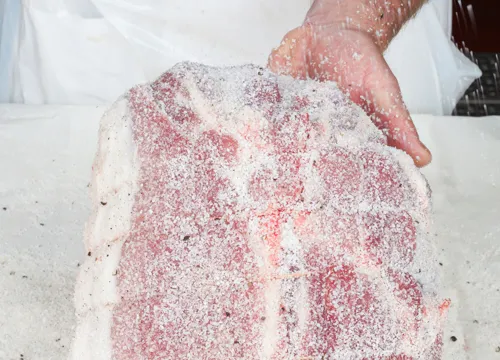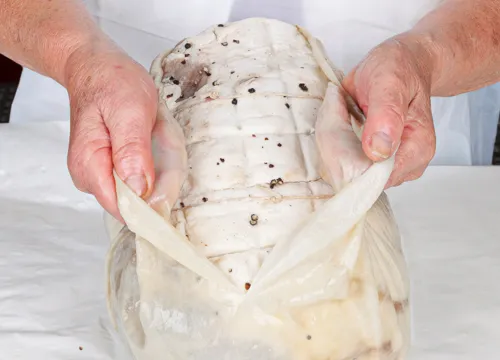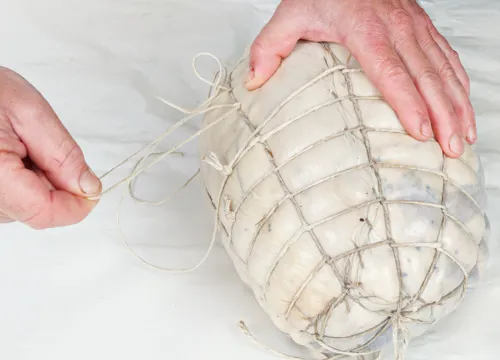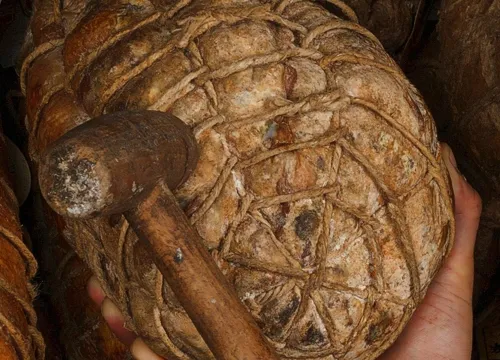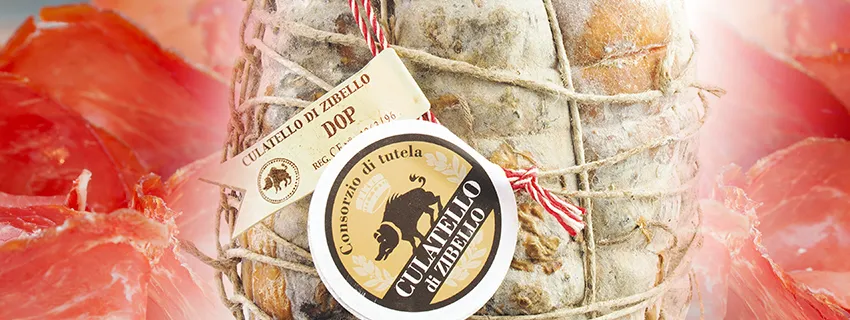Published:
Author: Antonio Maria Guerra
How Is Culatello Made?

How is Culatello made? In this article we will find the production method of Culatello di Zibello: a procedure whose origins date back to a distant past and used still today by the most traditional producers of this speciality. True artisans of taste, gathered in the Consorzio di Tuttela del Culatello di Zibello. Enjoy the reading!

How is Culatello di Zibello made?
The preparation method of the specialty is included in the Product Specification, approved by the institutions of the European Union.
Let’s find how it’s made:
1) The rind and the superficial fat of the pig leg are removed first, then the femur and a great part of the remaining fat. During this phase, the butcher gives Culatello its characteristic ‘pear’ shape;
2) The leg (‘muscle mass’) is salted by hand (the ‘salting’ / ‘salatura’), sprinkling it with a mixture of sodium chloride (or table salt) and split peppercorns. The Product Specification allows the use of a mix of dry white wine and pressed garlic. This procedure can take anywhere from one to six days.
3) The leg is then placed in a cold room where, at a temperature between 0° and 5°, it slowly absorbs the salt;
4) After a period of rest in the cell, the Culatello is stuffed (‘investitura’) into a natural casing consisting of the pig’s bladder;
5) The Culatello is tied very tight (‘legatura’) with a string, both horizontally and vertically (*1);
6) The Culatello is left to drain and dry for a period that can last from one to two months;
7) The seasoning takes place in rooms with frequent air exchange and a temperature between 13° and 17°;
The entire production cycle must last at least 10 months;
Note:
*1: The binding is very tight to avoid the formation of air bubbles;
Scopriamo le origini del Culatello di Zibello, oltre a un gran numero di informazioni e stuzzicanti curiosità. Per accedere all’articolo cliccare su questo LINK.
Culatello di Zibello PDO in video.
An interesting video, produced by the Consorzio, shows the procedure used to make Culatello di Ziballo PDO.

The PDO mark.
On 2 July 1996 the European Community, with Regulation no. 1263/96, assigned the PDO mark (Protected Designation of Origin) to Culatello di Zibello.
Read more
This appointment represented, at the same time, the recognition of the uniqueness of the product and the certificate of its quality. Every aspect of its production was regulated by a binding document (the Production Specification or ‘Disciplinare’), guaranteed by the Consorzio di Tutela del Culatello di Zibello.

The preservation.
The best way to preserve Culatello, once it has been sliced, is to moisten the exposed part with butter and olive oil. The ham must then be wrapped in a cloth and placed in a cool and dry place.

Slow Food Presidium.
Thanks to its ancient tradition, great quality, and strong bond with the territory to which it belongs, Culatello di Zibello has joined the group of Slow Food Presidia from the Italian region of Emilia Romagna. For more information, please visit the official website of the Slow Food Foundation.

Consorzio di Tutela: contacts.
Address: Piazza Giuseppe Garibaldi, 34, 43016 Polesine Zibello (Parma) – ITALY
Official website: Click here
Mail: Click here
Tel.: +39 0524 99131
Copyright information.
The images displayed in this page belong to WebFoodCulture and to Consorzio di Tutela del Culatello di Zibello, with the exception of:
Public Domain images:
- PDO Logo (Wikipedia Link)

